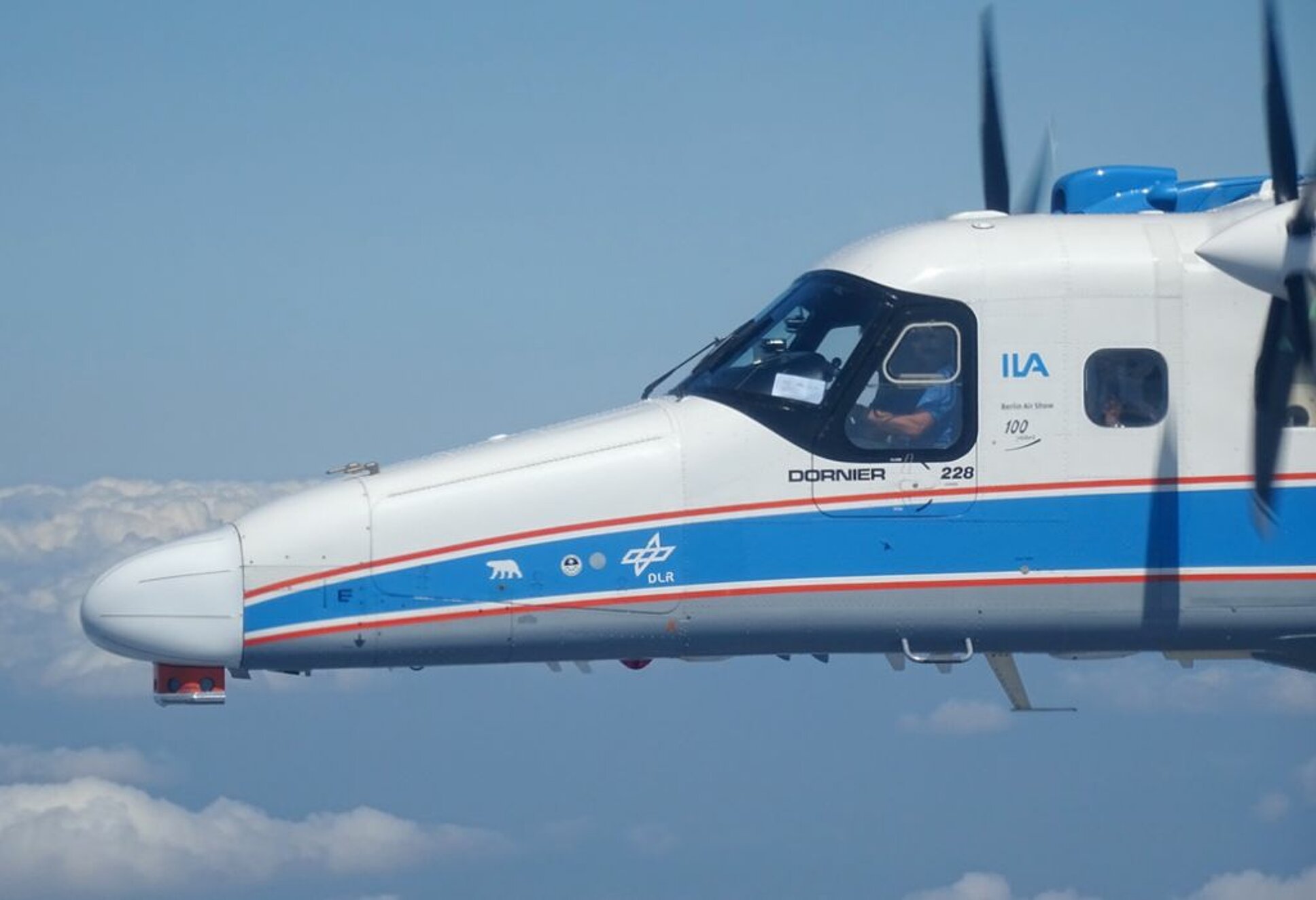30 September 2019 - The companies Diehl and HENSOLDT carried out flight tests in July and August together with the Deutschen Zentrum für Luft- und Raumfahrt (DLR) on a new sensor system to increase air safety. The idea is to prevent collisions between aircrafts. In the future, the sensors tested for detecting and avoiding collisions ("Sense & Avoid") could enable the approval and operation of unmanned aviation systems ("drones") in German airspace for the first time.
In a three-week long flight test campaign at the Braunschweig research airport, it was demonstrated that modern sensors can replace the pilot's eye in flight tests carried out for more than 30 hours.
For this purpose, the DLR research aircraft Dornier Do 228 was equipped with a "dual-mode sensor suite" manufactured by Diehl and HENSOLDT, consisting of radar and electro-optical sensors. That is, the optical signals of special cameras were combined with radar signals. In addition to DLR's Do 228, one more test aircraft was used for the tests. This aircraft made extensive maneuvers from different directions and heights and had to be detected by the sensor system of the Do 228. It was found in the flight tests that the sensor suites detect the other aircraft, even at long distances, in a reliable, accurate manner, track it precisely and could warn their own aircraft of a potential collision course well in time.
The electro-optical module of Diehl consists of a series of high-resolution cameras which scan the area in front as well as the side of the aircraft. It was demonstrated that this system can replace the pilot's view and significantly increases the accuracy of the overall system. The module is lightweight and compact and can be flexibly modified to meet the requirements of different aircrafts.
The "Detect-and-Avoid" radar made by HENSOLDT works with the electronic beam steering technology (Active Electronically Scanned Array, AESA). This allows several detection tasks to be performed simultaneously and objects to be detected extremely quickly. Thanks to radar technology, the flight direction of objects in one's own flight path can be measured precisely so as to be warned in time against potential collisions. With its unique detection properties, the multi-functional radar is suitable for military as well as civilian drones, e.g., for cargo delivery. In addition, the sensor also handles all the functions of a weather radar.
The combination of these two technologies (dual-mode sensor system) is suitable for unmanned aerial vehicles of different sizes and also has excellent detection properties.
The universal DLR research aircraft is regularly equipped and used as a flying platform for a wide variety of research tasks. For the research in unmanned aerial systems, it serves as a "National Sense & Avoid Demonstrator". Using a new type of digital autopilot, the aircraft can be automatically controlled from a ground station. So it can safely simulate an unmanned aerial system since two safety pilots are always on board the aircraft.
The flight tests were conducted as part of the "Project Sense and Avoid - national" (ProSA-n) project, which has been commissioned by the Bundesamt für Ausrüstung, Informationstechnik und Nutzung der Bundeswehr (BAAINBw).
About the DLR (German Aerospace Center)
The Deutsche Zentrum für Luft- und Raumfahrt (DLR) is the research center of the Federal Republic of Germany for aerospace. Its extensive research and development work in aviation, space, energy, transport, security and digitalization is integrated into national and international collaborative ventures. In addition to its own research, DLR is responsible for the planning and implementation of the German space program as a space agency commissioned by the federal government. DLR is also the umbrella organization for one of the biggest project promoters of Germany.
DLR employs approximately 8,700 people in the 26 locations at Cologne (headquarters), Augsburg, Berlin, Bonn, Braunschweig, Bremen, Bremerhaven, Cochstedt, Cottbus, Dresden, Göttingen, Hamburg, Hannover, Jena, Juelich, Lampoldshausen, Neustrelitz, Oberpfaffenhofen, Oldenburg, Rhein-Sieg-Kreis, Stade, Stuttgart, Trauen, Ulm, Weilheim and Zittau. DLR also has offices in Brussels, Paris, Tokyo and Washington DC
About Diehl Defence
Diehl Defence concentrates the Diehl Group’s business activities in the fields of security and defence. As a parent company, Diehl Defence manages numerous subsidiaries, program and affiliated companies. With 2,509 employees*, the corporate division generates annual sales of € 464 million* Euros. (*Key Business Figures 2018)
About HENSOLDT
HENSOLDT is a pioneer of technology and innovation in the field of defense and security electronics. The company, based in Taufkirchen near Munich, is one of the market leaders in the field of civil and military sensor solutions. It develops new products to combat various threats on the basis of innovative approaches to data management, robotics and cyber security. HENSOLDT achieved an annual turnover of more than 1 billion euros with about 4,500 employees.



